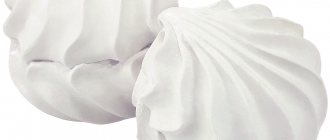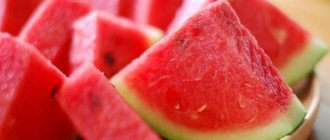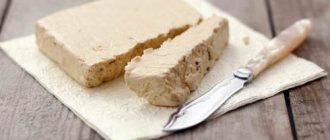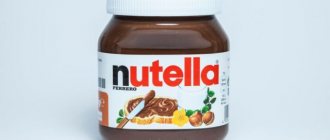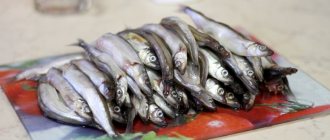Author: Kristina Lobanovskaya, doctor, practicing nutritionist Article updated: 11/09/2020
Ask a Question
Marmalade is a very popular jelly treat, which is considered to be a healthy sweet. However, from the large assortment of all types of products produced today, not every one can be classified as a healthy diet. The beneficial properties and calorie content of marmalade depend entirely on its composition, which, with modern developments in technology, is rarely natural. From time immemorial, this dessert was prepared by boiling apples containing pectin to a jelly-like state. Over time, pectin began to be replaced with gelatin or agar-agar, which made it possible to prepare sweets from any fruit or berries. And these days, instead of natural fruits, artificial colors and flavors have begun to be actively used. Therefore, today marmalade products are divided into 2 types depending on the technology used and composition: jelly (from fruit and berry jelly) and chewing (with various chemical additives).
Calorie content of marmalade lemon slices per 100 grams
The calorie content of marmalade lemon slices per 100 grams is 326.2 kcal. In 100 g of product:
- 0.11 g protein;
- 0 g fat;
- 81.1 g carbohydrates.
To prepare this sweet, molasses, sugar, agar, citric acid, dry lemon juice, dried egg white, flavorings, sodium lactate and curcumin are used.
Thanks to the presence of marmalade in agar, lemon slices are rich in iron, iodine and calcium. Lemon juice used to produce sweets is enriched with vitamins B, C, PP, E, and minerals manganese, calcium, sodium, phosphorus, and iron.
Dishes
Marmalade is an excellent independent treat that can be a healthy alternative to any store-bought sweets and quick snacks. In addition, this product is ideal as a filling or layer in baked goods, and is often used as a spread for sweet sandwiches. In any case, its calorie content depends on the presence or absence of sugar in it, as well as the energy value of other components used in the recipe.
Homemade
There are two ways to prepare homemade sweets from fruit and berry puree or juice: either by long-term boiling or by adding a gelling component to it. The amount of sugar usually varies at your discretion depending on the desired sweetness and, accordingly, the calorie content of the marmalade.
Apple gelatin
Apple is the classic version of this delicacy, from which all other varieties “descended”. Initially, apples containing the largest amount of pectin were boiled for a long time until they became dense, and after cooling, a real marmalade mass was obtained. Today there are different recipes for such a dessert, the use of which can significantly reduce cooking time.
To create such a healthy sweetness, first bake or stew peeled and quartered apples in any convenient way. It is best to use the microwave, which will soften them in 5 minutes. Then grind with a blender or fork until pureed. For 300 g of the resulting mass, take 20 g of gelatin, which is pre-diluted in 50 ml of water and allowed to swell before the puree is ready to add it to the still hot mass.
The resulting mixture is placed in silicone molds and placed in the refrigerator for 3-4 hours. You can place in one tray and leave overnight, then cut into cubes and roll in sugar or coconut. The calorie content of marmalade prepared according to this recipe will be 50 kcal/100 g, excluding sprinkles.
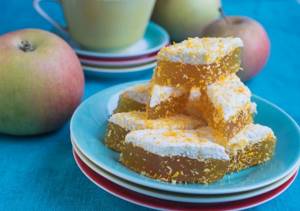
Mint-orange on agar
Steam 5 g of mint in 150 ml of boiling water and let it brew for 15 minutes. At this time, squeeze the juice from 2 oranges. Filter the mint infusion, mix with orange juice, add 2 tsp. agar-agar and leave for 20 minutes to swell. Then put the mixture on the fire, bring to a boil and cook for 3 minutes over low heat. The hot liquid is poured into molds and left in the refrigerator until completely solidified. The result is a very tasty, refreshing and healthy dessert without artificial additives, 100 g of which contains only 32 kcal.
Quince without gelling agent
Peel and cut 2 kg of quince into halves, removing the partitions and seeds. Bring 2 liters of water to a boil in a saucepan, lower the quince and cook until soft, and then drain in a colander and allow all the water to drain. The resulting mass is ground in a blender to a puree, weighed, the same amount of sugar is added, and 3 tbsp is poured in. l. lemon juice, put on medium heat and cook with occasional stirring for 1.5 hours until the mass thickens.
Cover a baking sheet or large tray with sides at least 3 cm high with parchment, pour in the puree, and level the surface with a spatula. Leave in the refrigerator for a day to harden. After this, cut into cubes, lay out on parchment and dry, turning occasionally, for 3 days. The calorie content of marmalade in this case will be 144 kcal per 100 grams.
Using these recipes, you can prepare a delicious delicacy from almost any fruit or berry, experimenting with taste, color, shape and calorie content. But when using a recipe without a gelling agent, you must choose fruits with a high pectin content.
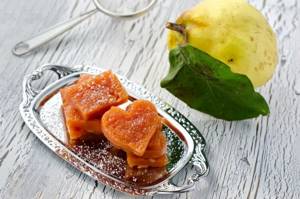
Baskets
Various desserts with marmalade additive can be a very healthy sweet. An example of this are unusual baskets that contain no flour, but only healthy food products. To prepare such baskets, 60 g of dates are poured with water for half an hour, pitted, 100 g of sunflower seeds and 10 g of carob are added. Grind the resulting mixture with a blender and place it in small silicone muffin tins, forming the bottom layer. Leave in the freezer for 30 minutes.
Squeeze the juice from 3 tangerines, add ½ tsp. agar-agar, leave to swell for half an hour. At this time, melt 30 g of cocoa butter in a water bath and mix with 15 g of low-fat cocoa powder. Half of the resulting mass is poured into molds, taking them out of the freezer, and then returned to the cold again for 10 minutes. Tangerine juice with agar is brought to a boil, cooled slightly, poured into the same molds and left until completely solidified. Pour over the remaining chocolate glaze, heating in a water bath if necessary.
Baskets with marmalade prepared according to this recipe will have a calorie content of 293.6 kcal per 100 grams. Instead of cocoa butter, you can take your favorite chocolate, then the calorie content of the finished dessert will be slightly lower, depending on the type of chocolate chosen. It should be borne in mind that 100 g of cocoa butter contains 884 kcal.
Cake "Potato"
A delicious no-bake dessert prepared according to this recipe turns out to be very sweet, since it involves the use of store-bought jelly marmalade with a calorie content of 320 kcal/100 g. Due to this, as well as the presence of other very nutritious components, the energy value of the “potato” increases to 390 kcal per 100 grams
To prepare the dessert, grind 500 g of biscuits (for example, “Maria” or “Zoological”) into crumbs in a blender. Toast 250 g of almond petals in the oven until the color changes slightly, and then grind into powder with a blender. The petals can be replaced with peeled almond kernels. So that they are crushed evenly, they are placed in a blender in parts. The resulting mass is mixed with cookie crumbs.
Separately, mix 4 tbsp in a saucepan. l. granulated sugar and cocoa powder, add 250 ml of milk, 100 g of butter and 50 ml of cognac. Heat with constant stirring until it boils and all ingredients are dissolved. Pour into the dry mixture, but not all at once, but as much as is needed to obtain a not too liquid plastic mass that will hold its shape. Cool in the refrigerator for 30 minutes.
After this, scoop up the chocolate mixture with a spoon and with hands moistened with water, make a cake out of it, put a marmalade slice inside, connect the edges and form a “potato”. Wrap a cutting board in cling film and place the cakes on it. Cool in the refrigerator for 1 hour. Decorate as desired and drink cold with unsweetened tea or coffee. It turns out very tasty and chocolatey.

Syrnikov with a surprise
Cheesecakes are a favorite dish for many, which is great for baby food, but sometimes gets boring. To diversify the recipe, it is recommended to add marmalade filling. To prepare the dough, place 600 g of cottage cheese in a bowl, beat in 4 eggs, add 2 tbsp. l. granulated sugar and a pinch of salt. Mix thoroughly and then knead with a potato masher and, during the kneading process, gradually add 100 g of sifted flour. Separately, cut 100 g of small marmalade records.
Pour sunflower oil into the frying pan until it completely covers the bottom and heat it well. Form a flat cake with a spoon dipped in water, lower it into a hot frying pan, place a marmalade plate on top and cover with a second portion of dough, pressing the edges tightly to the bottom flat cake. Fry until golden brown on both sides, without covering. The result is delicious cheesecakes with a sweet surprise, 100 grams of which will contain 199 calories.
Cookies with a layer
Chocolate cookies with a layer of marmalade with a calorie content of 485 kcal/100 g are a good option for homemade baking, which should be consumed in limited quantities. But 2-3 pieces will be enough to satisfy your sweet tooth and keep you feeling full for a long time.
To prepare the dough, 3 eggs are divided into whites and yolks. Beat the egg whites with a mixer or blender, gradually adding 4 tbsp. l. powdered sugar. Then add the yolks and beat again until fluffy. Pour ½ cup of sifted flour into the resulting mixture, knead thoroughly until a liquid, homogeneous dough forms. Using a pastry bag, squeeze it onto a baking sheet lined with baking paper to make a round cookie. Bake in the oven at 180ºC for 8–10 minutes.
Take out the finished cookies, place a small marmalade slice on the surface of each and put them in the refrigerator for half an hour. At this time, prepare the glaze by melting 50 g of butter with 1 bar of milk chocolate in a water bath. The resulting glaze is poured over the cookies.
Calorie content of worm marmalade per 100 grams
The calorie content of worm marmalade per 100 grams is 330.2 kcal. In 100 g of product:
- 3.63 g protein;
- 0 g fat;
- 77.1 g carbohydrates.
This marmalade is enriched with vitamin C, which has a beneficial effect on the condition of the heart and blood vessels, and helps to activate the immune functions of the body. Eating sweets normalizes the functioning of the nervous system and helps prevent stress.
Read: Calorie content of steamed cod
At the same time, we should not forget that worm marmalade contains a lot of unnatural flavors and dyes, which can exacerbate diseases of the stomach, intestines, pancreas and gall bladder. Sweet acids have a negative effect on tooth enamel and provoke the development of caries.
Daily consumption rate
It is recommended to consume no more than 30–40 g of sweet treats per day. A 100g serving of jelly marmalade contains more than 20% of an adult's daily calorie intake. It is important to enjoy only high-quality products. Typically, the more attractive the sweetness, the richer its taste and aroma, the higher the content of harmful food additives.

When purchasing treats, it is better to choose a product based on natural dyes. For example, paprika or turmeric extract, lemon or orange zest. And also when you include juices - cherry, raspberry, black and red currant, pomegranate. If the label states that a dye or preservative is “identical to natural,” then a product with such a composition cannot be considered healthy.
The benefits of marmalade
Marmalade made from pectin is traditionally considered the most useful. Such sweets:
- reduce cholesterol levels;
- normalize the metabolism of carbohydrates and fats;
- accelerate the healing processes of burns and wounds;
- provide prevention of bacterial diseases of the gastrointestinal tract;
- cleanse the body of heavy metal compounds;
- normalize liver functions;
- improve gastric motility;
- restore the nervous system and strength after heavy mental and physical stress.
Composition and beneficial properties
It is worth noting that not all marmalade is the same; there are three types:
- Berry - fruity;
- Jelly;
- Fruity-jelly.
The composition necessarily includes agar-agar and pectin. It happens that gelatin, sugar syrup, flavorings and dyes are added.
Useful properties of the components:
- Pectin is a natural ingredient obtained from berries and fruits. It helps the body get rid of various harmful substances, toxins, and heavy metals. It has a beneficial effect on intestinal function and lowers cholesterol levels.
- Agar-agar is a useful substance that is extracted from algae. It rids the body of toxins. Eliminates problems with the thyroid gland and liver. Helps cleanse the intestines and contains many vitamins: E, B5, K. As well as iron, calcium, magnesium and potassium.
- Gelatin is quite viscous in consistency. It is extracted from bones and tendons by boiling. Its main property is the ability to harden. It has many positive aspects: it has a good effect on the condition of the skin, strengthens nails, and improves hair growth.
Many years ago, many enterprises produced marmalade in our country. It was then that the debate about the calorie content of this product first began. It had to be produced in strict compliance with standards, using only natural ingredients. This is where the most popular myth regarding the benefits and harms of marmalade for the figure comes from.
Once upon a time it was really useful and did not have a high calorie content, only 220 per hundred grams. But then it was produced on the basis of fruit purees and juices, adding only natural dyes. And for thickness, an extract from algae was added.
At the moment, it is difficult to talk about the usefulness of marmalade, because it is impossible to find a real natural product. We began to use various flavors, flavor enhancers, additives, and preservatives. The nutritional value also increased, from 220 to 425 calories. Instead of healthy fruits, the ingredients now include flavor substitutes and bright chemical dyes.
This product may not be brightly colored. Its color will be dull, its shape will be simple and elastic. The maximum permissible caloric content of marmalade of the highest category is no more than 330 calories per hundred grams.
